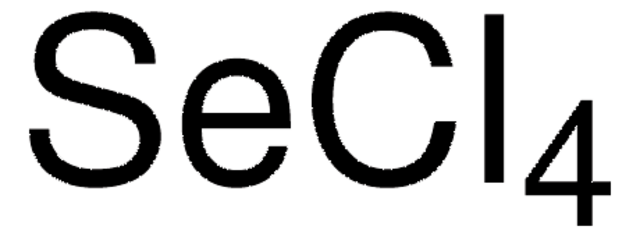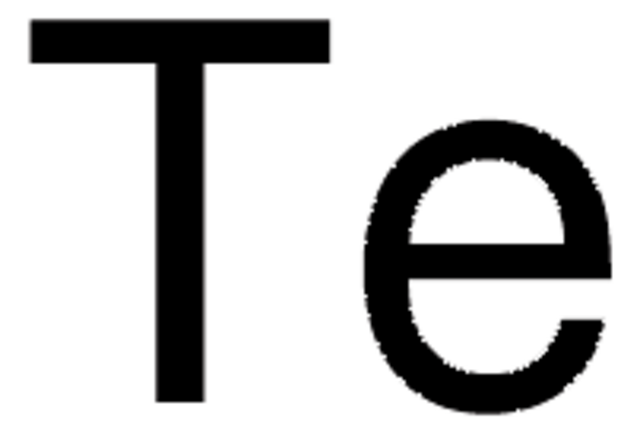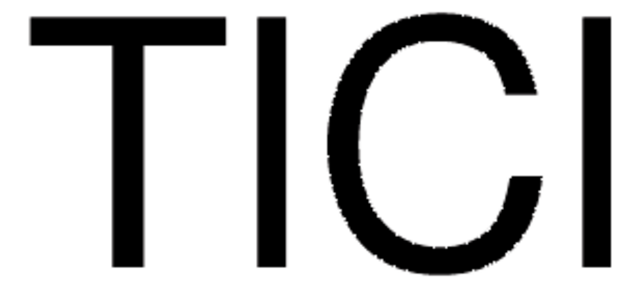Kluczowe dokumenty
205338
Tellurium tetrachloride
99%
Synonim(y):
Tellurium chloride, Tellurium(IV) chloride, Tetrachlorotellurium
About This Item
Polecane produkty
Poziom jakości
Próba
99%
Formularz
powder, crystals or chunks
bp
380 °C (lit.)
mp
224 °C (lit.)
gęstość
3.26 g/mL at 25 °C (lit.)
ciąg SMILES
Cl[Te](Cl)(Cl)Cl
InChI
1S/Cl4Te/c1-5(2,3)4
Klucz InChI
SWLJJEFSPJCUBD-UHFFFAOYSA-N
Szukasz podobnych produktów? Odwiedź Przewodnik dotyczący porównywania produktów
Opis ogólny
Zastosowanie
- Highly efficient regioselective synthesis of organotellurium compounds: Explores the reactions of Tellurium Tetrachloride with 1-alkenes, highlighting its utility in organic synthesis (VA Potapov et al., 2017).
- Cyclization Reactions: TeCl4 acts as a bis-electrophile in double-electrophilic cyclization reactions, demonstrating its versatility in organic transformations (N Korol, M Slivka, 2018).
- Regio-and stereoselective addition of tellurium tetrachloride: Investigates the addition of TeCl4 to methyl propargyl ether, emphasizing the stereochemistry of the addition process (MV Musalova et al., 2017).
Hasło ostrzegawcze
Danger
Zwroty wskazujące rodzaj zagrożenia
Zwroty wskazujące środki ostrożności
Klasyfikacja zagrożeń
Skin Corr. 1B
Kod klasy składowania
8A - Combustible corrosive hazardous materials
Klasa zagrożenia wodnego (WGK)
WGK 3
Temperatura zapłonu (°F)
Not applicable
Temperatura zapłonu (°C)
Not applicable
Środki ochrony indywidualnej
Eyeshields, Faceshields, Gloves, type P3 (EN 143) respirator cartridges
Wybierz jedną z najnowszych wersji:
Masz już ten produkt?
Dokumenty związane z niedawno zakupionymi produktami zostały zamieszczone w Bibliotece dokumentów.
Klienci oglądali również te produkty
Produkty
High Purity Metalorganic Precursors for CPV Device Fabrication
Colloidal quantum dots (CQDs) are semiconducting crystals of only a few nanometers (ca. 2–12 nm) coated with ligand/surfactant molecules to help prevent agglomeration.
Nasz zespół naukowców ma doświadczenie we wszystkich obszarach badań, w tym w naukach przyrodniczych, materiałoznawstwie, syntezie chemicznej, chromatografii, analityce i wielu innych dziedzinach.
Skontaktuj się z zespołem ds. pomocy technicznej







